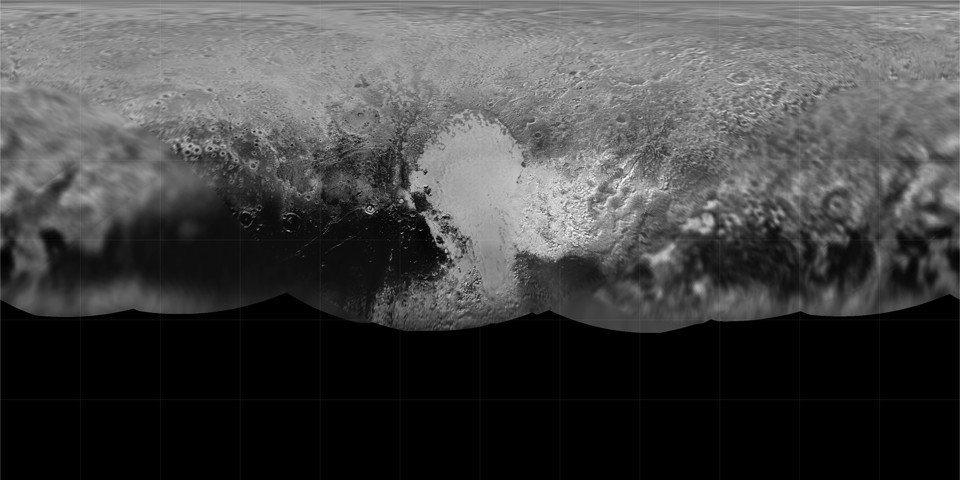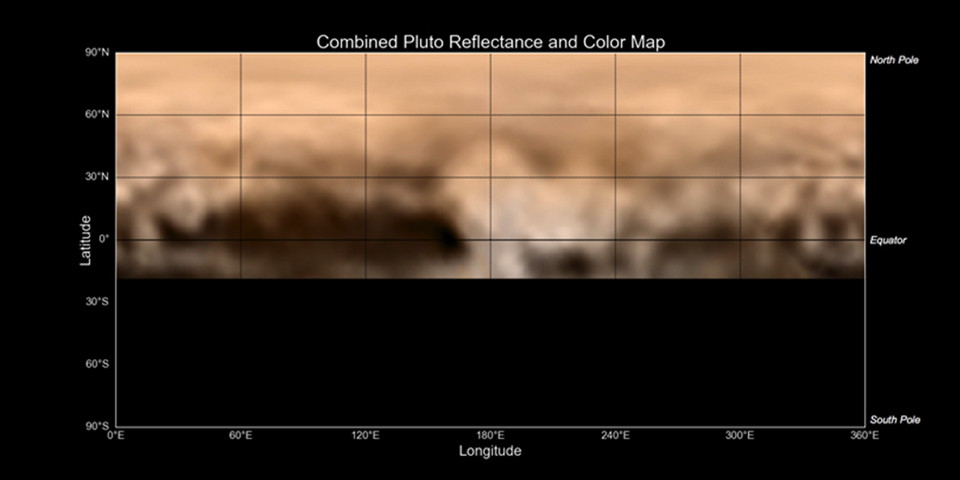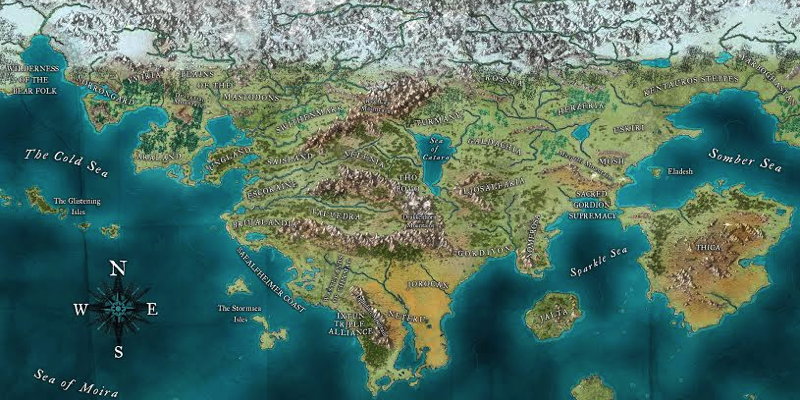As I predicted, a new global map of Pluto has been released that incorporates the imagery that has been downlinked so far from the New Horizons flyby: with gridlines, without gridlines. If nothing else, the equatorial projection demonstrates how much of Pluto’s surface was not seen during the very brief encounter. From what I understand, imagery downlinks will resume in September and carry on for another year, so this map will almost certainly see many more updates.
Meanwhile, Ceres also has some new maps.




